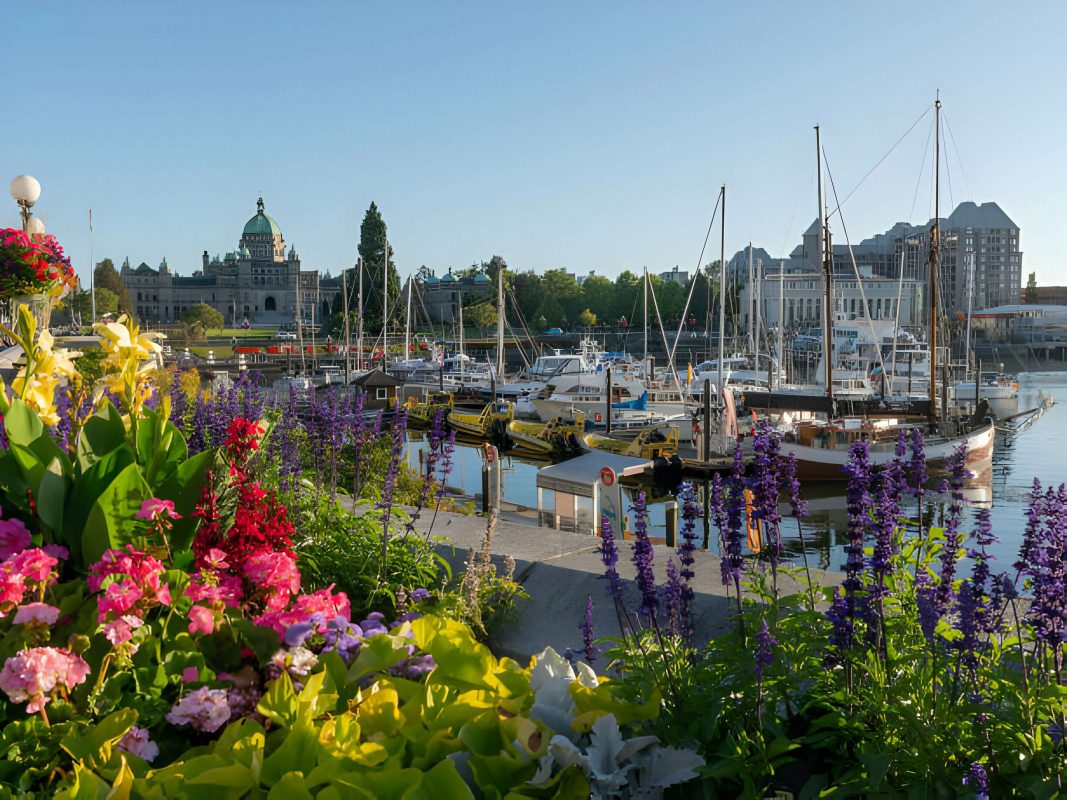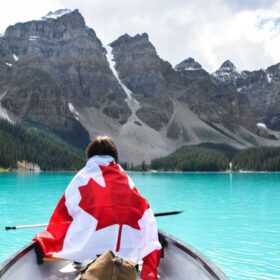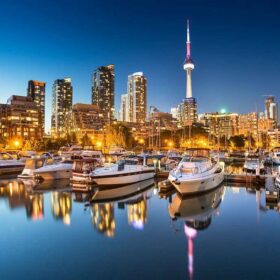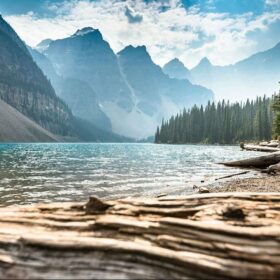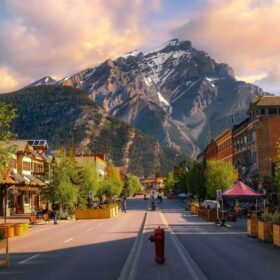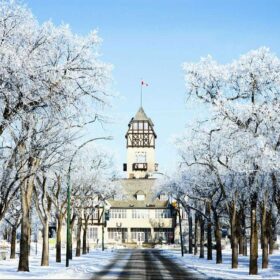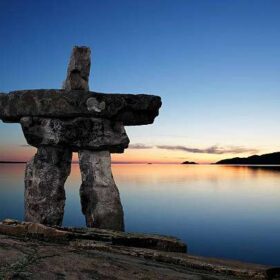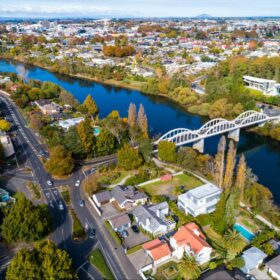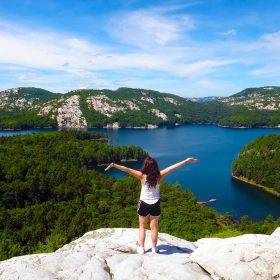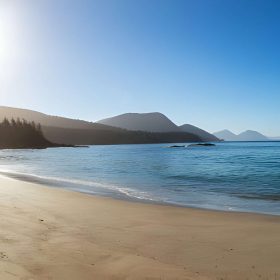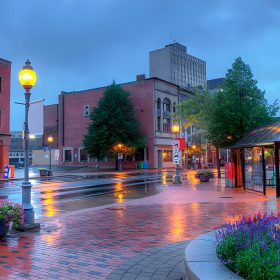When contemplating winter in Canada, the predominant association is often with cold temperatures. While embracing the joys of chilly Canadian winters, such as ice-skating on frozen canals, skiing down snow-clad mountains, or witnessing the enchanting Northern Lights in the winter sky, not everyone is inclined to endure the extreme cold of the Great White North.
For those traveling in Canada during winter but seeking locales with milder climates – and indeed, such places do exist – this list is tailored for you.
A noticeable pattern characterizes the destinations featured here: the majority are situated in British Columbia, Canada’s westernmost province. Despite being home to some of the best ski areas in the world, many coastal communities in BC enjoy more temperate and mild winter conditions. However, as revealed, a few cities in other Canadian provinces also boast warmer climates – some of which may come as a surprise!
These highlighted destinations are not only the warmest places but also captivating towns and cities where travelers would find it worthwhile to spend considerable time, perhaps even an entire winter, given the abundance of festivals and events during the season. Although Canadians may not openly admit it, this is how they ensure they navigate through the months from November to April.
Explore the best winter destinations with our compilation of the Warmest Places in Canada to Visit This Winter.
1. Victoria, British Columbia
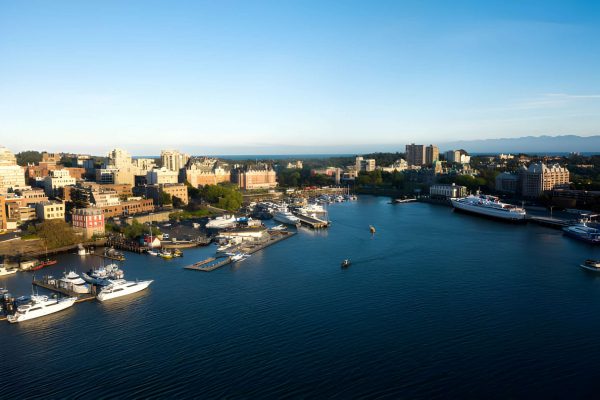
Victoria, the capital of British Columbia, holds the distinguished title of being Canada’s warmest city. It boasts the highest average temperatures across the entire country, with an average daily high temperature of 7.6 degrees Celsius (45.7 degrees Fahrenheit) and an average daily low temperature of 1.5 degrees Celsius (34.7 degrees Fahrenheit) in January, which marks the peak of the Canadian winter.
The appeal of Victoria, and other scenic spots on Vancouver Island, as a retirement destination is significantly influenced by its wonderfully mild winters, allowing people to enjoy outdoor strolls throughout the year. Winter in Victoria offers a variety of activities; even the renowned Butchart Gardens remains open during the winter months, albeit with blooming flowers showcased in their indoor gardens.
Winter activities, such as ice skating, Christmas light tours, and sipping on a cozy cup of tea, can still be experienced in Victoria. The notable distinction is that these activities can be enjoyed with comfort, free from the discomfort of numbing fingers and toes!
Accommodation: Where to Stay in British Columbia: Best Areas & Hotels
2. Vancouver, British Columbia
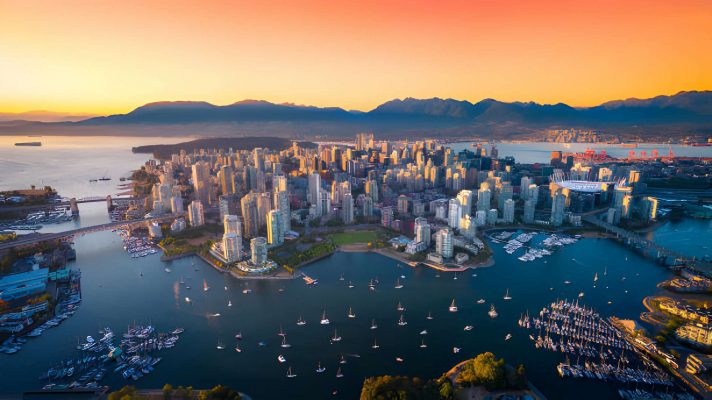
While the rest of the country is bundling up in winter parkas and dealing with frosted windshields, Vancouverites can be seen leisurely strolling along the Sea Wall, having lunch on sunlit patios, and even indulging in a round of golf (yes, there are golf courses open year-round).
In January, Vancouver experiences an average daily high temperature of 6.9 degrees Celsius (44 degrees Fahrenheit), with daily lows around 1.4 degrees Celsius (34.5 degrees Fahrenheit). It may not match the warmth of Florida or Hawaii, but it is sufficiently mild to truly appreciate outdoor activities. Additionally, Vancouver often surprises with a few extra warm and sunny days right in the heart of winter, providing a bonus preview of spring.
While snow is a rarity in Vancouver throughout the year, encountering the infamous rain during the winter is highly likely. Be sure to pack an umbrella or a rain jacket, and do not let a bit of wet weather deter you from enjoying the city.
Read More: Top Tourist Attractions in Vancouver
3. Kelowna, British Columbia
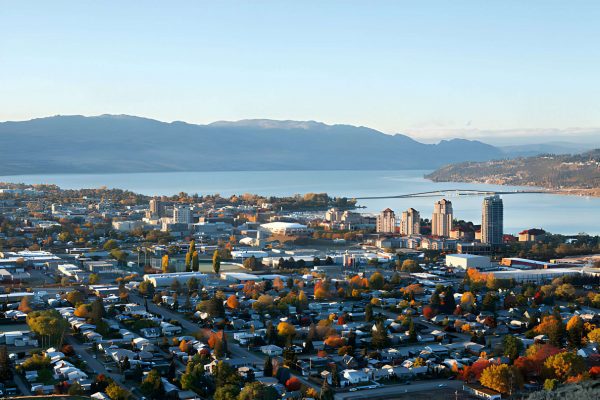
If you are seeking refuge from the cold but wish to avoid the rain, consider exploring Kelowna, British Columbia.
During the summer, Kelowna is a favored destination for travelers due to its hot weather, and the lake provides an ideal setting for various water activities. While water-skiing might not be the top choice in winter, there are numerous compelling reasons to visit Kelowna and the Okanagan region during the colder months, such as winter hiking, indulging in a spa day, or enjoying a meal at a renowned restaurant.
What makes escaping winter in Kelowna even more appealing is that you can experience snowy and winter-related activities whenever you desire. Kelowna is just a short drive from some of British Columbia’s best ski resorts, so make sure to pack your ski gear.
4. White Rock, British Columbia
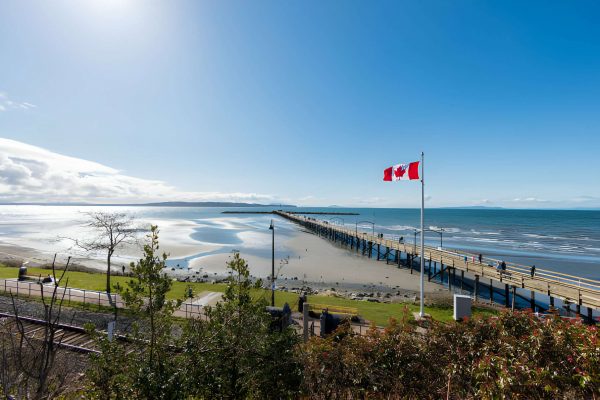
Imagine taking Vancouver, removing some of the rain, and adding a few degrees to the temperature. The outcome? White Rock!
Situated south of Vancouver and just north of the US border, White Rock is a petite city along Semiahmoo Bay in the Pacific Ocean. Being a bit farther from the Coast Mountains contributes to receiving less rain and enjoying 20 percent more sunshine than Vancouver.
If you find yourself in Vancouver during the winter and yearn for a respite from the gloomy skies and rainy conditions, keep an eye on the forecast for White Rock. Should a sunny day be in the offing, embark on the hour-long drive south and relish a day basking in the sunlight. Start by exploring the White Rock Pier and taking a stroll along the beach on the White Rock Promenade. Then, indulge in an extended lunch at one of the numerous restaurants with ocean views before returning to Vancouver.
White Rock offers the ideal opportunity to soak up some much-needed Vitamin D in the heart of winter.
5. St. Catharines, Ontario
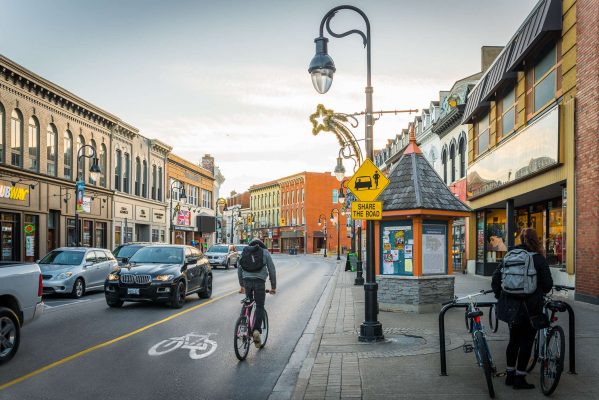
We understand your surprise: How does a city in Ontario end up on a list of Canada’s warmest places in the winter?
Rest assured; it is not an error. St. Catharines, a delightful city in Ontario’s Niagara Region, enjoys the advantages of its proximity to Lake Ontario and Lake Erie, along with the protection provided by the Niagara Escarpment. The outcome? A microclimate that maintains a relatively mild temperature, even during winter.
While St. Catharines is warmer than many other places in Ontario (though Sarnia is slightly warmer), it still experiences chilly temperatures in the peak of winter. Nevertheless, temperatures are moderate in the early and late parts of the season. In November, the average daily high is 8.4 degrees Celsius (47.1 degrees Fahrenheit), and March is nearly as warm, with an average daily high of 7.4 degrees Celsius (45.3 degrees Fahrenheit).
6. Toronto, Ontario
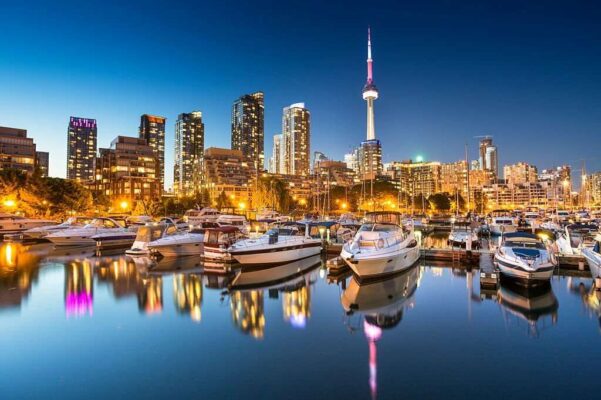
If you have experienced winter in Toronto, you might question its inclusion on this list. We won’t sugarcoat it: Toronto can get quite cold during the winter, and snow is a regular occurrence. Packing winter essentials like boots, a warm coat, and a toque (Canadian term for a beanie or winter hat) is a must!
However, Toronto stands out by ranking fourth in the list of cities with the longest frost-free seasons in Canada. Proudly boasting 203 frost-free days per year – just eight days less than Victoria, the mildest city in the country – Toronto enjoys relatively warm conditions for a significant part of the year, according to Canadian standards.
With an average daily high of -1.5 degrees Celsius (29.3 degrees Fahrenheit) in January, you might not need to pack a swimsuit for your winter visit to Toronto – unless your hotel has a fantastic pool. Yet, the city offers a plethora of indoor attractions throughout the winter, including cultural gems like the Royal Ontario Museum and the Art Gallery of Ontario, as well as professional sports games featuring the Toronto Raptors and the Toronto Maple Leaves.
You can have an exciting Toronto trip without spending extended periods outdoors. And when you do step outside, just remember it is not as frigid as, for example, Calgary or Montreal!
Read More: Top Tourist Attractions in Toronto
7. Kamloops, British Columbia
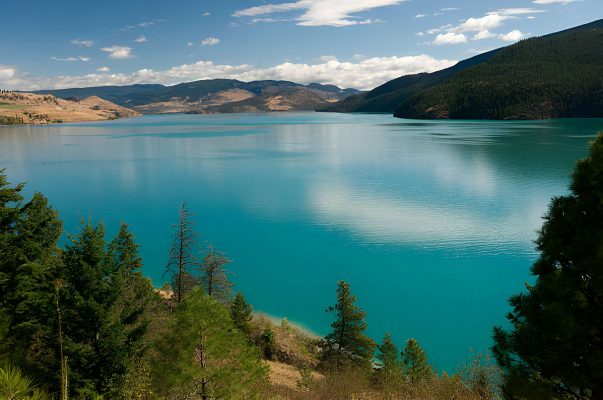
A sunny winter day has a magical way of making the cold more bearable, and Kamloops, the province’s second sunniest city, enjoys its fair share of bluebird days even in the heart of winter. Whether you’re seeking refuge from snowstorms or constant rain, Kamloops might just be the ideal destination for you.
Situated in a valley surrounded by mountains, Kamloops experiences relatively mild temperatures down in the valley (by Canadian standards – winter temperatures can still dip below freezing, so it’s not exactly a tropical escape). Venture into the mountains, and you’ll find colder, snowier conditions – perfect for indulging in some of Canada’s top-notch winter sports.
Whether you are into skiing, snowboarding, skating, or snowshoeing, the opportunities are close at hand. If you prefer indoor activities, Kamloops offers numerous options to keep you engaged. Test your physical prowess at the indoor rock-climbing gym or trampoline park or challenge your intellect by tackling an escape room. With so many indoor pursuits, you’ll hardly notice the weather outside.
8. Halifax, Nova Scotia
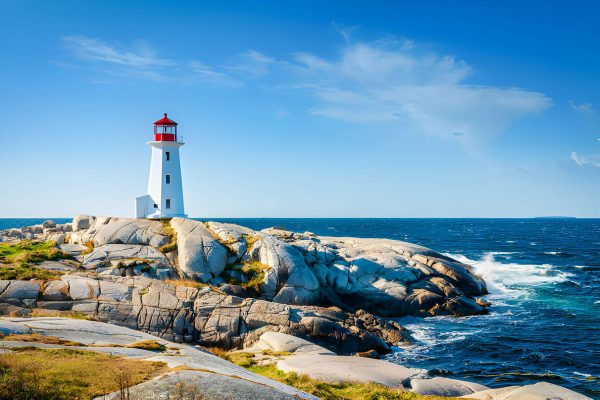
If you’re determined to explore Canada’s picturesque East Coast during the winter, the most temperate city to visit is Halifax, the capital of Nova Scotia. Located on the Atlantic shores, Halifax experiences milder winters compared to the province’s inland towns and cities.
It is important to note that the term “mild” is relative, and you should expect a considerable amount of snow during your winter visit to Halifax. Fortunately, there are plenty of ways to enjoy the snowy landscapes, whether it’s snowshoeing, cross-country skiing, or tobogganing on Citadel Hill.
For those who prefer to avoid the cold, Halifax offers opportunities to delve into the rich history of Nova Scotia at the Canadian Museum of Immigration or the Maritime Museum of the Atlantic. Seek cultural experiences at the Art Gallery of Nova Scotia or delve into the realms of astronomy and science at the Discovery Centre.
A bonus of winter visits to Halifax is the significantly lower crowds at its attractions compared to the busy summer months. Not only can you avoid the masses, but you might also score some excellent travel deals.
9. Sooke, British Columbia
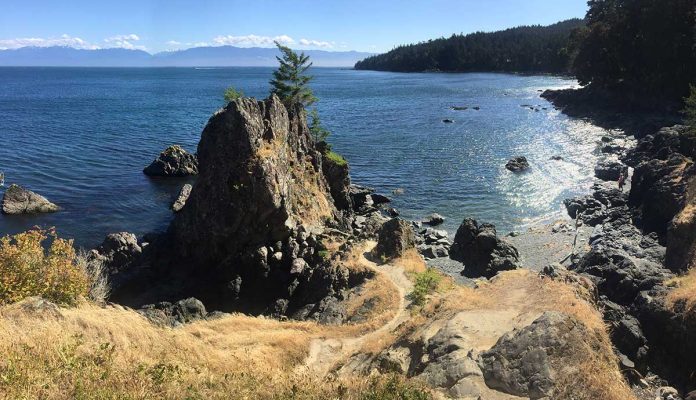
Nestled on the wild and secluded west coast of Vancouver Island, Sooke is an ideal small town for those seeking an active outdoor lifestyle while desiring a variety of restaurants and amenities.
Protected by a headland from the harsh weather of the Juan de Fuca Strait, this town offers the perfect blend of a winter retreat and an escape from the hustle and bustle of city life. With an average daily high of 7 degrees Celsius (44.6 degrees Fahrenheit) in January, it’s just half a degree cooler than Victoria.
Sooke boasts a diverse community, drawing residents from various backgrounds, all generally known for their friendliness. Surrounded by towering trees, the town provides access to some of Vancouver Island’s best hiking trails beneath a protective canopy. Nearby beaches offer scenic spots for walking, picnicking, and enjoying ocean views. For biking enthusiasts, the Galloping Goose Trail runs from Sooke to Victoria, complemented by numerous mountain biking trails in the vicinity.
Despite its modest population of 13,000, Sooke features excellent dining options. After an invigorating walk along Whiffen Spit on a sunny day, replenish your energy with a hearty Mountain Burger at the West Coast Grill.
If you ever feel the need for a change of scenery and crave the excitement of city lights, downtown Victoria is just a 45-minute drive away.
10. St. John’s, Newfoundland
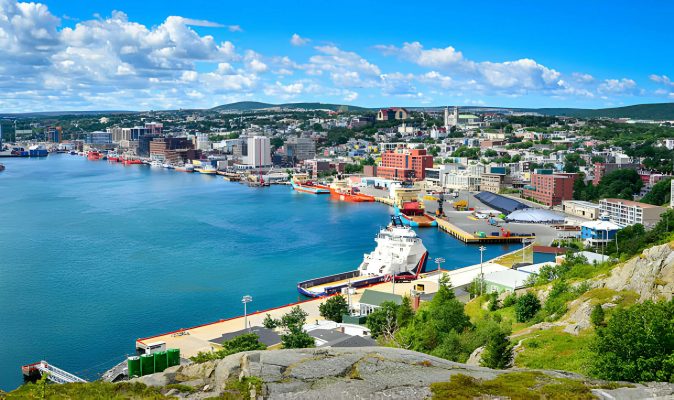
Concerning weather, St. John’s, Newfoundland, is renowned for being the #1 windiest, foggiest, and cloudiest city in Canada.
If you choose to visit in the winter, you’re likely to encounter all these conditions, often within the same day. However, thanks to the moderating influence of the Gulf Stream, extremely cold weather is unlikely. Winter temperatures are just slightly cooler than those in Kelowna, BC, another mild city mentioned earlier on this list.
While it might be a stretch to describe St. John’s winter as truly mild, the city does experience snowfall, which often melts quickly due to the relatively warmer temperatures. On the flip side, winter in St. John’s can bring rain, sleet, and freezing rain.
An optimist might appreciate the stormy weather as a dramatic backdrop for admiring the rugged coast, with wild waves crashing against cliffs. Signal Hill and Cape Spear provide unique vantage points for soaking in the coastal beauty.
When you’re ready to escape the elements, head to downtown St. John’s to explore local shops and warm up with a coffee or tea. A day can be easily filled by visiting The Rooms, a remarkable museum celebrating Newfoundland’s rich history and impressive artists.
FAQs
Q: Are these destinations suitable for families with children?
A: Absolutely! Many of these destinations offer family-friendly activities and attractions suitable for all ages.
Q: What’s the best time to visit these warm places in Canada during winter?
A: Winter in Canada spans from December to February, making it an ideal time to explore these destinations.
Q: Are there any unique winter festivals mentioned in the article?
A: Yes, several destinations host winter festivals, adding a festive touch to your visit.
Q: Can I find indoor activities in these warm places to escape the cold?
A: Definitely! Many cities mentioned have a range of indoor activities, from museums to theaters.
Q: Is there a specific order to visit these places mentioned in the article?
A: No, the order is flexible based on your preferences and travel plans.

